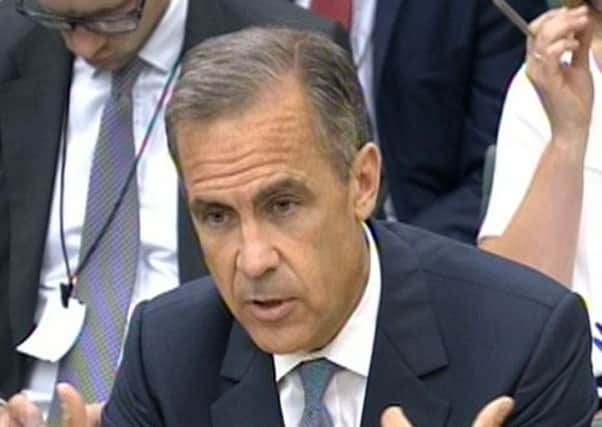Experts doubt Mark Carney’s rise in interest rates


Financial services group Scottish Friendly described Mr Carney as the investment industry’s “unreliable boyfriend”, saying that he last year “over-promised and under-delivered” on interest rates.
A rise would be good news for savers who have seen returns on their nest eggs remain at rock-bottom levels for the past six years, as interest rates have remained at a record low of 0.5 per cent. However, it would be bad news for borrowers – especially people with mortgages, which often track the base interest rate – who would see their payments rise by an average of more than £1,000 a year.
Advertisement
Hide AdAdvertisement
Hide AdSpeaking at Lincoln Cathedral on Thursday night, Mr Carney indicated that rates could rise at the turn of the year.
He said that he expected rates to rise over the next three years, reaching “about half as high as historical averages”, or about two per cent. However, he warned that the Monetary Policy Committee, which sets the rates, will “have to feel its way as it goes. Short-term interest rates have averaged around 4.5 per cent since around the Bank’s inception three centuries ago,” he said. “It would not seem unreasonable to me to expect that once normalisation begins, interest rate increases would proceed slowly and rise to a level in the medium term that is perhaps about half as high as historic averages.”
He added: “In my view, the decision as to when to start such a process of adjustment will likely come into sharper relief around the turn of this year.”
Scottish Friendly said Mr Carney’s previous hints of a rates rise had never materialised.
Calum Bennie, savings expert at the Glasgow-based firm, said: “Given inflation is currently at zero and the economy still looks a little fragile, it will be interesting to see if an interest rate rise actually transpires.
“Last year our favourite ‘unreliable boyfriend’ over-promised and under-delivered on interest rates, so this hint of an increase could be another case of smoke and mirrors.”
He added: “The possibility of an interest rate rise will generate a mixed reaction in people. Those who have borrowed money will see repayments increase and may begin to struggle to keep up, while on the flipside, savers are unlikely to see a rise in savings rates for some time.”
Howard Archer, chief UK economist at IHS Global, said that he forecast that the first rate rise would come in February 2016 but that he was “markedly less confident in this call”.
Advertisement
Hide AdAdvertisement
Hide Ad“There is clearly now a very real possibility that the MPC could act before the end of 2015,” he said. “Regardless of whether the Bank of England first acts in late 2015 or early 2016, we see interest rates only rising to 1.25 per cent by the end of 2016 and two per cent by the end of 2017.”
Chris Williams, chief executive at Wealth Horizon, said: “Carney has for a long time outlined plans to keep rates low for a sustained period, but his announcement this week shows how thinking among the committee members is shifting.”
The typical mortgage loan size for a home-mover in Scotland in the first quarter of 2015 was £138,395, according to the Council of Mortgage Lenders.
A typical current monthly payment with an interest rate of 0.5 per cent is £491. A rate change of 1.5 per cent would increase monthly payments to around £587 – a difference of £96 a month, or £1,152 a year.
It is expected the first rise will take the Bank rate to 0.75 per cent, probably taking effect between November and February.
Guy Anker, managing editor of MoneySavingExpert, said: “It’s probably going to mean an increase in costs, but it’s unlikely to mean a dire increase in costs.”